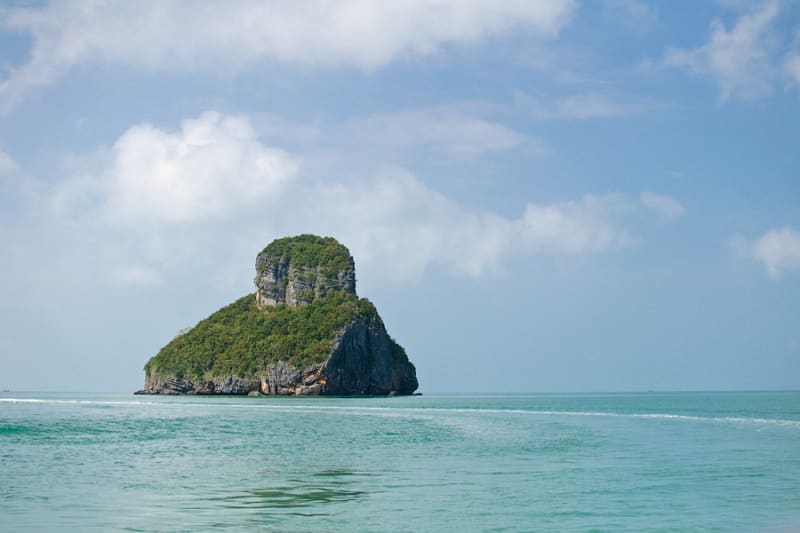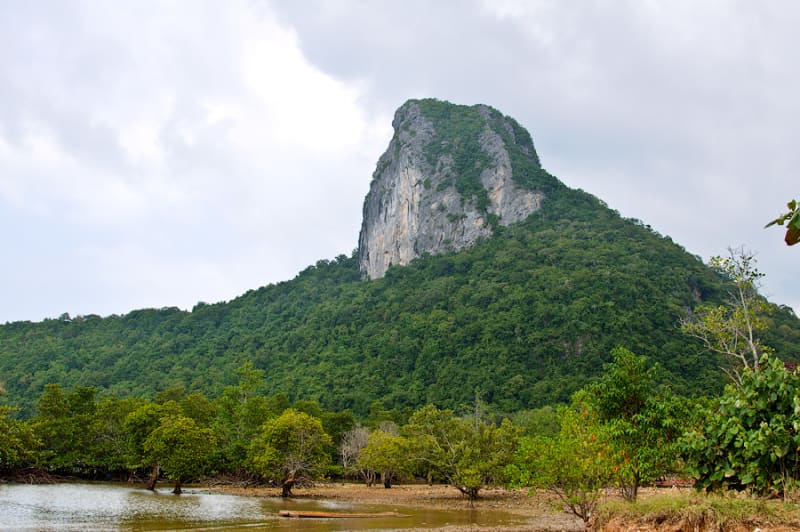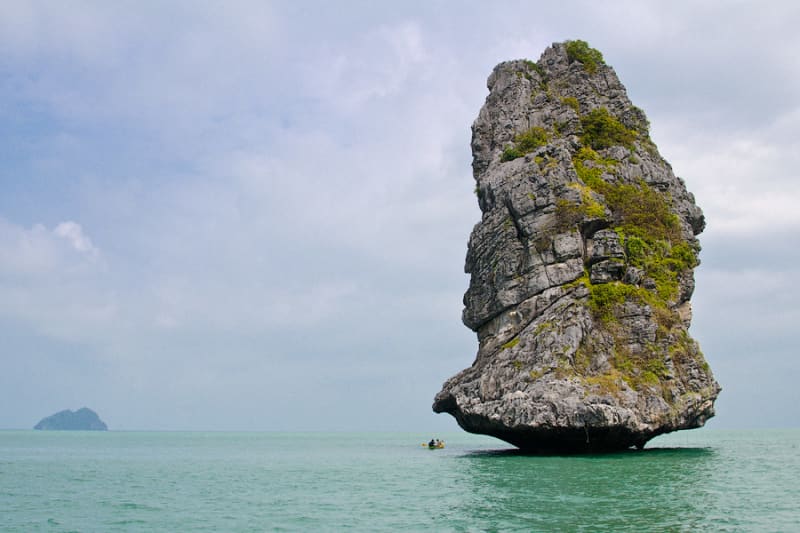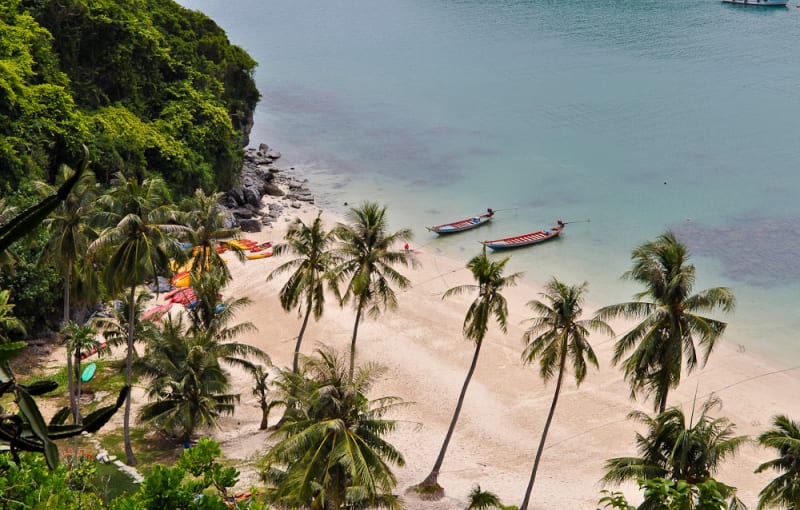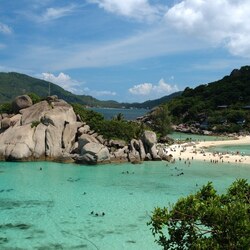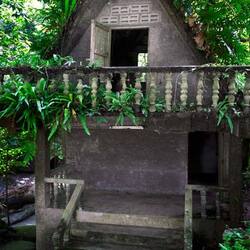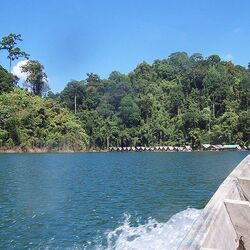Mu-Ko-Ang-Thong National Park
Mu-Ko-Ang-Thong is a national marine park located in Surat Thani Province in Thailand in the Gulf of Thailand in the South China Sea. The park includes 42 islands with a total area of 84 km2. The territory of the islands is 102 km2.
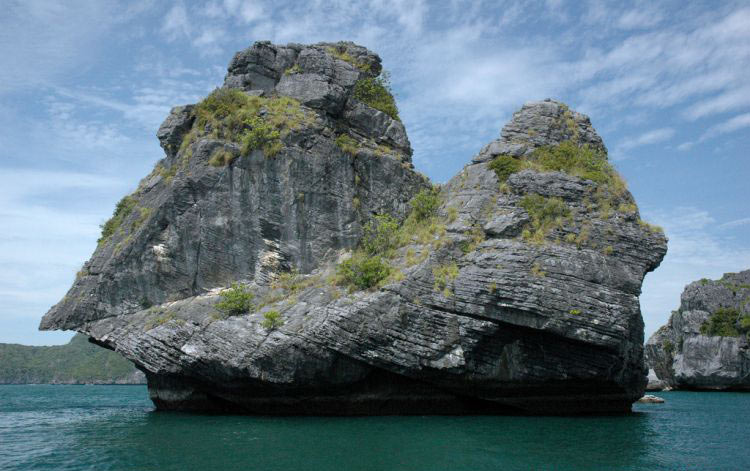
The park is a conservation area of Thailand and is famous for its large number of limestone caves, beaches and tropical trees. The popular Koh Samui resort is located near the park. The name of the marine park literally translates as "golden bay", and the islands themselves are a rich ground for new discoveries. After 1980, this territory was included in the register of national parks of the country, the islands have brought to our days a unique landscape and almost untouched nature.
All the islands in Mu Koh Ang Thong National Park have different shapes and areas, and each has its own special feature: some have bird markets, others have amazing beaches, and others are famous for their coves. Diving is very developed on the islands, while on land you can see exotic birds or meet a leopard in the forest. Although in the 20th century, the military base of the Kingdom of Thailand was located on the islands of the park, but during this time the military did not have time to harm nature.
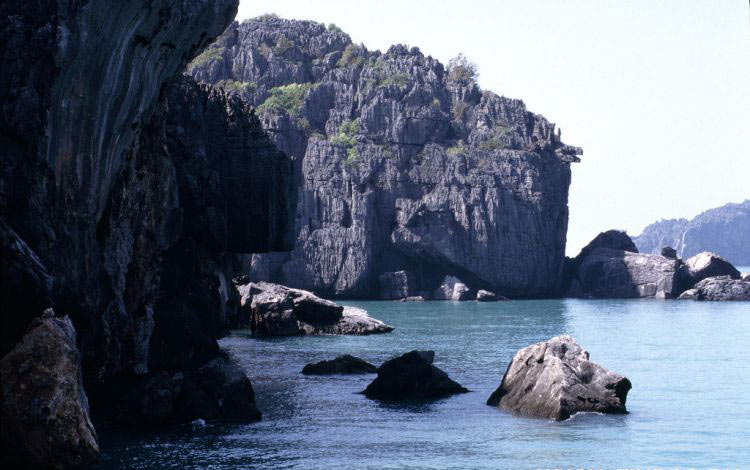
Traveling along the coastline is best done by canoe, discovering new coves, caves, and beaches. The calm waters of the Mu-Ko-Ang-Thong Marine Park are a great place for diving and snorkeling. Underwater, you will encounter colorful placers of corals, strange fish and other inhabitants of the depths of the sea, and a variety of plants. Dolphins can also be found in the local waters. Hiking will be no less exciting, especially a walk into the jungle of the largest island of Koh Vua Talap, which also has an observation deck at 400 meters altitude.
Park guests should visit the lake on Mae Koh Island, where the water is emerald in color, and the shores are framed by rocks and cliffs. There used to be a volcano crater on the site of the lake. There are very rare fish in the lake, so it is forbidden to swim there. Popular places include the Bois Beauc cave, with stalactites and stalagmites.

